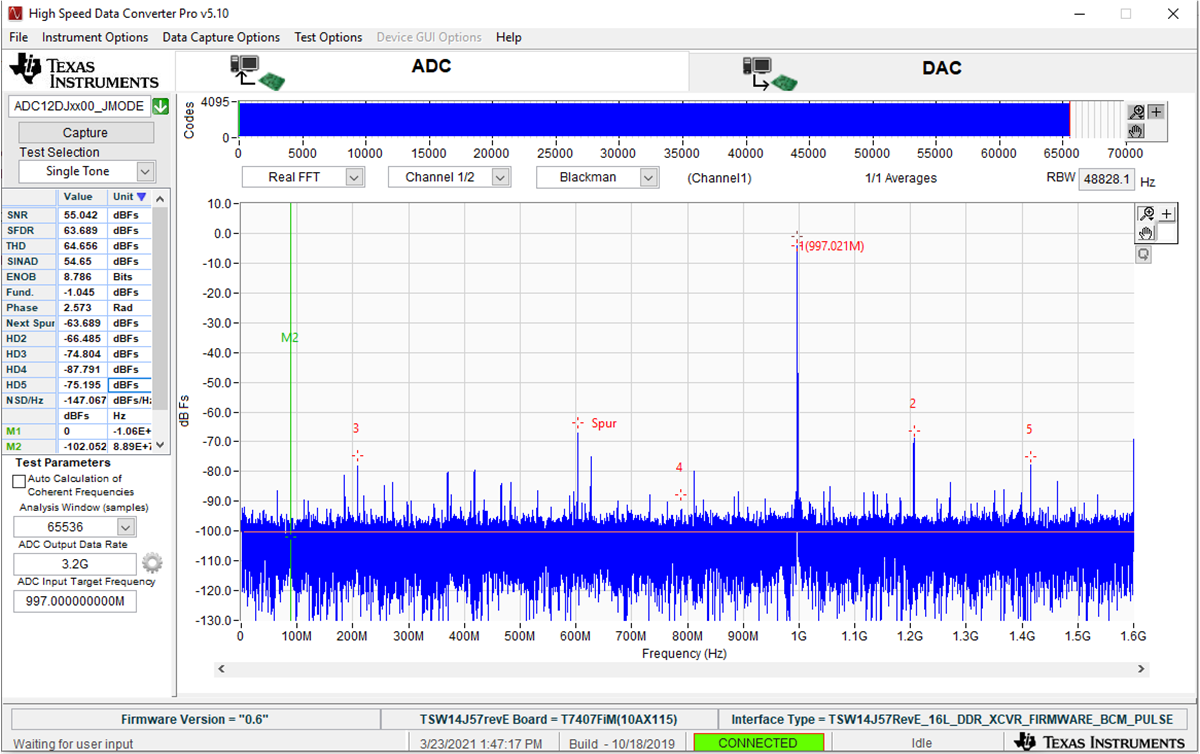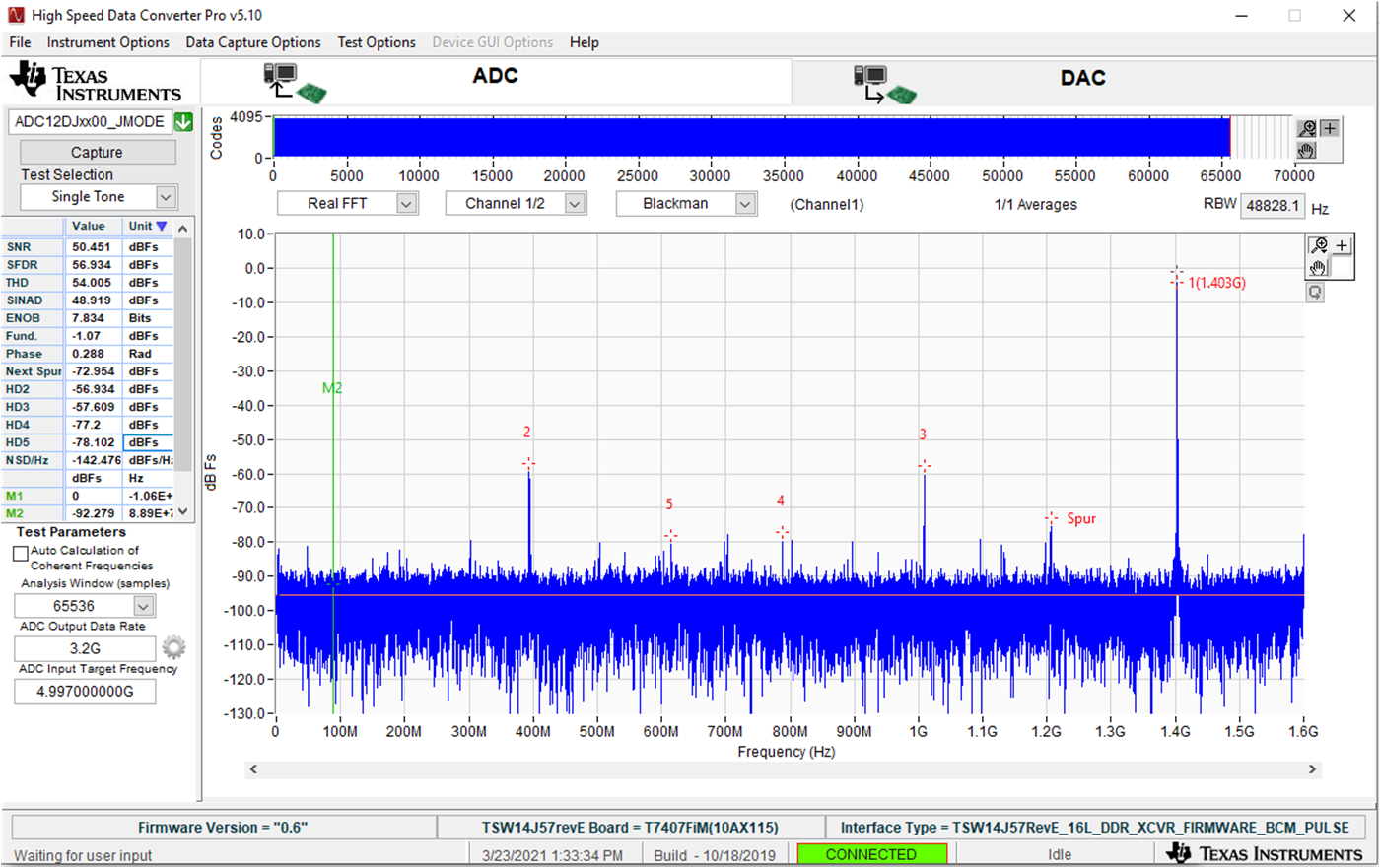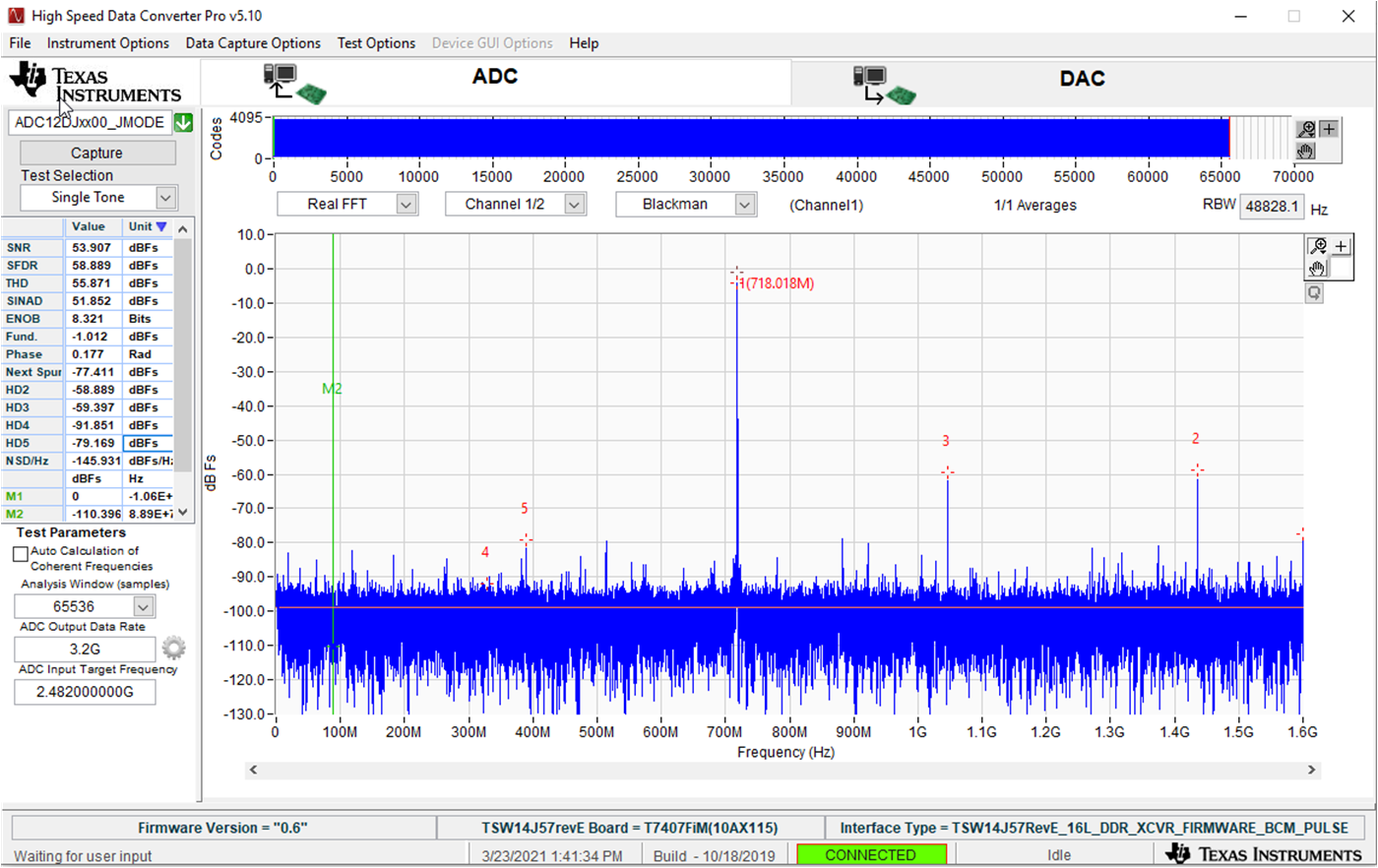TIDUEY8 March 2023
- Description
- Resources
- Features
- Applications
- 5
- 1System Description
-
2System Overview
- 2.1 Design Block Diagram
- 2.2 Highlighted Products
- 2.3
Design Steps
- 2.3.1 Multiple JESD204B Synchronization Requirements
- 2.3.2 Clock Tree Design
- 2.3.3 Power Management
- 3Getting Started Hardware and Software
- 4Testing and Results
- 5Design and Documentation Support
- 6About the Authors
4.2.3 Signal Chain Performance
Table 4-2 shows the measured SNR performance of the ADC12DJ3200-SP at various frequencies for –1-dBFS differential inputs and dual channel mode (JMODE3). The comparison between the measured SNR with the ADC12DJ3200EVMCVAL onboard clocks and with TIDA-010191 clocks shows almost similar performance. Figure 4-9 through Figure 4-11 show the spectral results at a 3200-MHz sampling frequency in single-channel mode.
Table 4-2 SNR Measurement
| INPUT FREQ (MHz) | ADC DATA SHEET SNR (dBFS) | ADC12DJ3200EVM ONBOARD CLOCK MEASURED (dBFS) | TIDA-010191 MEASURED (dBFS) |
|---|---|---|---|
| 997 | 55.5 | 55 | 55.6 |
| 2482 | 55 | 53.4 | 53.9 |
| 4997 | 53 | 51.4 | 50.4 |
 Figure 4-9 Noise Floor at 99-MHz Carrier
Frequency
Figure 4-9 Noise Floor at 99-MHz Carrier
Frequency Figure 4-11 Noise Floor at 1403-MHz Carrier
Frequency
Figure 4-11 Noise Floor at 1403-MHz Carrier
Frequency Figure 4-10 Noise Floor at 718-MHz Carrier
Frequency
Figure 4-10 Noise Floor at 718-MHz Carrier
Frequency